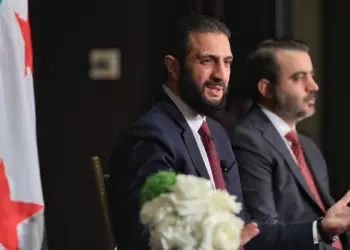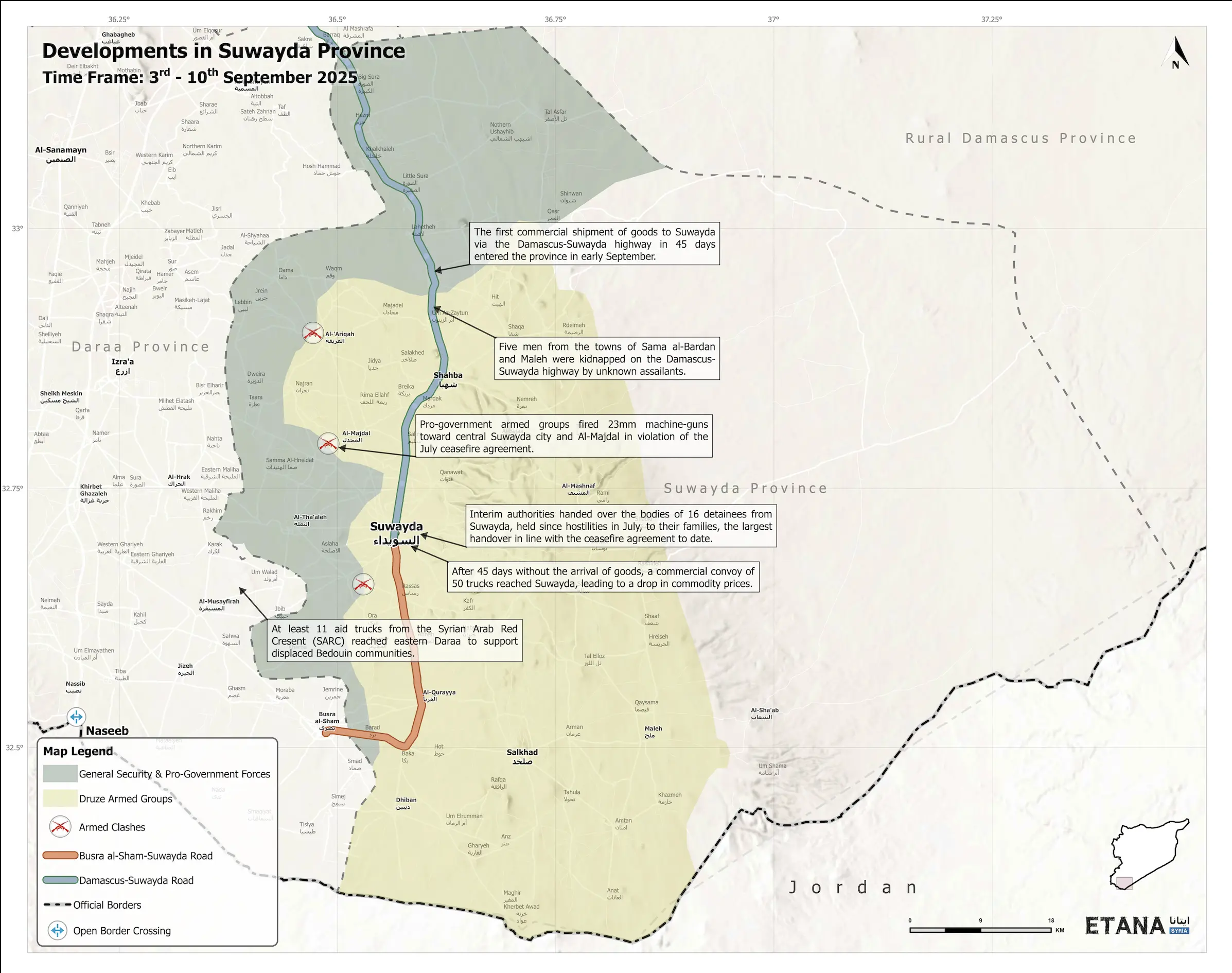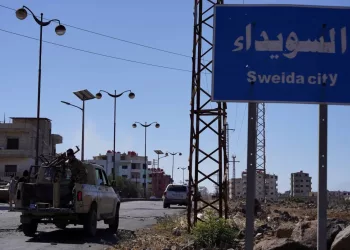The 5th October 2025 parliamentary elections were presented as a landmark in Syria’s post-Assad transition, yet the process demonstrated authoritarian consolidation rather than progressive change. Conducted through appointments and closely administered electoral bodies under Law No. 143 of 2025, the exercise produced a parliament that was chosen rather than elected. The decision to proceed with elections before establishing the political, security and legal foundations for meaningful participation has reinforced executive dominance rather than curbed it. Representation of women, minorities and some key regions remained limited, while citizens had neither meaningful access to the process nor transparent oversight over its conduct.
Design and Legal Framework
Law No. 143 of 2025 defined the structure of the People’s Assembly elections, creating a multilayered system of appointments and indirect voting that ensured executive control over the outcome. In accordance with the legislation, 140 of the 210 members of the People’s Assembly were selected through an indirect voting system managed by local electoral bodies, with the remaining 70 to be appointed directly by interim President Ahmad al-Shara’a.
Voting was postponed or incomplete in several governorates, notably in Suwayda, Raqqa and parts of Hasakeh, due to insecurity and administrative constraints. The Higher Elections Committee (HEC), established and appointed by the interim president under Decree No. 66 of 2025, oversaw every stage of the process. Although tasked with facilitating a representative assembly, the committee operated within a narrow, executive-led framework.
Institutional control
The voting structure ensured executive oversight over the outcome. The interim president appointed the HEC, which in turn appointed all provincial sub-committees and appeals committees. These sub-committees were responsible for selecting the members of local electoral bodies in each district, proportionate to population size (for example, 50 members in Zabadani, 500 in Damascus). The appeals committees, appointed by the HEC and the minister of justice, reviewed objections to any member of the sub-committees or electoral bodies and had authority to exclude or replace them. Although the sub-committees were formally appointed by the HEC, none were selected without prior recommendation from the Department of Political Affairs. In practice, all appointments were channelled through the Ministry of Foreign Affairs, effectively linking the entire process to the executive.
Formation of electoral bodies
The combined appointment, vetting and appeals mechanisms for candidacy created layered control over participation. As a result, the filtering progressively narrowed the field to candidates deemed acceptable to the authorities (candidates had to meet conditions such as a clean criminal record and no prior association with the Assad regime). After names were published, appeals were open for three days, after which the final list was confirmed. In practice, all names were effectively approved or recommended through the Department of Political Affairs.
As a result, each electoral body became both the voter base and the candidate pool. Members of the body could nominate themselves as parliamentary candidates. These same members then voted among themselves to elect their local representative. For example, 50 members in Zabadani could produce 20 candidates competing for one seat, with those same 50 members each casting a single vote. In total, 49 electoral centres operated across Syria, although participation in some governorates was suspended.
The interim president will now directly appoint the remaining 70 MPs (one-third of the total), reportedly later this month. As for the provinces excluded from the vote, according to procedural guidance under Law No. 143, seats left vacant in these areas were expected to be completed through presidential appointment to ensure full parliamentary composition.
Observed Outcomes
The distribution of parliamentary seats lacked fairness and transparency. For example, Aleppo and Idlib were allocated 42 seats, while Damascus and Rural Damascus received only 22. Al-Bab and Azaz were granted three seats, whereas both Eastern and Western Ghouta together received five. The Darayya region, encompassing Darayya, Moadamiyet al-Sham, Sahnaya, Ashrafiyet Sahnaya and Hajar al-Aswad, was given just one seat. These allocations bear little relation to actual population size: greater Damascus and its surrounding areas host several million residents, far more than many northern districts with multiple representatives. The population data used to justify these seat numbers remain opaque and inconsistent, a practice that undermines the representative character of the assembly and may prove politically unsustainable in the long term.
Public engagement with the process was negligible. Ordinary citizens played little role in the process, neither voting nor participating in any form of civic monitoring. Limited campaigning, unclear procedures and the absence of independent oversight meant that most citizens were observers rather than participants. The indirect electoral system restricted voting to pre-approved electoral bodies, with no opportunity for the wider public to take part. Around 85% of the MPs selected through the indirect process are over the age of 40, in a country where most citizens are under 40. With only six women selected, women’s representation dropped to under 3%, far below the law’s nominal target of 20% “where possible,” in clear contradiction to Syria’s commitments under the UN Convention on the Elimination of all Discrimination Against Women (CEDAW). As a result, the process generated limited public awareness or sense of ownership, functioning more as an administrative exercise than a participatory political event.
Sequencing and Implications for the Transition
At the heart of the current crisis lies a failure of sequencing. Elections were held before the minimum political, institutional and security conditions existed to render them meaningful. This inversion of priorities—privileging institutional appearance over societal legitimacy—has embedded networks of loyalty and control into the country’s emerging governance structure, and risks deepening the very instability that the transition seeks to overcome.
The elections ultimately will produce a parliament created through executive-led vetting that functions primarily as an instrument of consolidation rather than oversight, blurring the distinction between legislative and executive authority. The exclusion of women, minorities and independent civic actors further undermined the pluralism necessary for national reconciliation and reconstruction. Conducting elections under restrictive conditions entrenches, rather than transforms, power structures. Sequencing reforms correctly, building participation, safeguards and inclusion before institutional consolidation, is therefore essential. Such superficial stability risks reproducing the very fragility it seeks to prevent. Transitions sustained by procedural mimicry may endure in form, but they remain brittle in substance and prone to deeper instability over time.
Policy Considerations
Moving forward, ETANA recommends that Syria’s interim authorities develop and publish a clear roadmap to expand inclusion and public participation in political decision-making, with measurable steps and timelines. Damascus should also enable domestic civic monitoring, independent media coverage and public awareness initiatives to strengthen understanding of electoral rights and rebuild confidence in future processes. In the future, authorities can also expand political dialogue by broadening diplomatic engagement to include feminist networks, civic researchers, political parties, unions, independent business associations and regional councils.
The international community, meanwhile, must condition recognition and engagement with the interim authorities on measurable improvements in electoral integrity, representation and inclusivity. In addition, they can lend more support to non-governmental civic bodies, unions, professional associations and municipal councils as complementary vehicles for public representation.
Conclusion
The 2025 parliamentary elections underscore the contradictions at the heart of Syria’s transition: a process framed as a democratic milestone has, in practice, reproduced the same patterns of centralised control that long constrained political life in Syria. The multilayered appeals process was a tool used by the interim authorities to filter out individuals considered politically undesirable or independent. While the system was designed to appear participatory, the structure of appointments, vetting and appeals ensured that every stage of the process was controlled by the executive. This produced a selected rather than elected body. Such controlled stability risks recreating the fragility it claims to overcome. Genuine progress in Syria’s political transition will depend on establishing transparent participation, independent oversight and safeguards for diversity before further consolidation of power. For both the interim authorities and their international partners, this means re-sequencing priorities, moving from managing appearances of governance to building its genuine foundations.




